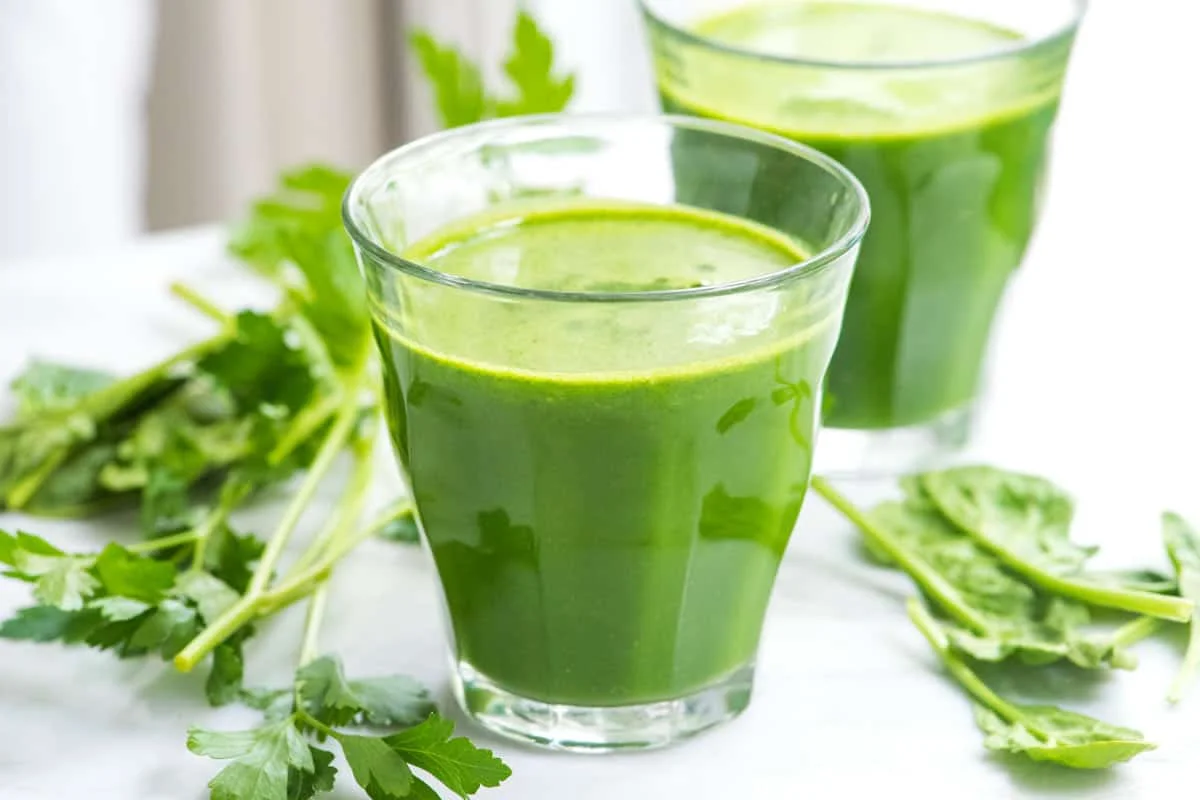Green juice has now been a trademark of the wellness and health movement. Promising detoxification, more vitality, and a brilliant complexion, this colorful drink makes sense why health-conscious people all around have taken interest in it. But is green juice simply another overhyped health trend or really a miraculous drink? Let’s explore the facts regarding green juice by means of science, advantages, and possible negative consequences.
What Is Green Juice?
Usually referring to a concentrated liquid mix of several green vegetables and occasionally fruits, green juice Common items are celery, cucumbers, parsley, mint, spinach, and kale. Often added for taste are fruits like apple, pineapple, or lemon. The end effect is a vitamin-, mineral-, and phytonutrient-dense drink.
The Promised Benefits of Green Juice
- Rich in Nutrients: Green juice is lauded for its high concentration of vitamins and minerals. Ingredients like spinach and kale are rich in vitamin K, iron, and calcium, while cucumbers and celery offer hydration and potassium.
- Packed with Antioxidants: The leafy greens and herbs in green juice are abundant in antioxidants, such as flavonoids and carotenoids, which help fight free radicals and reduce oxidative stress.
- Improved Digestion: Many proponents of green juice claim it aids digestion, as it provides enzymes that may assist in breaking down food. The liquid form makes it easy on the digestive system, especially for those with sensitive stomachs.
- Potential Detoxification: One of the most marketed claims about green juice is its ability to detoxify the body. Ingredients like parsley and cilantro are thought to support liver function and help the body eliminate toxins.
- Hydration and Energy Boost: Made primarily of water-rich vegetables, green juice helps maintain hydration. The combination of vitamins and natural sugars can also provide a quick energy boost.
The Science Behind Detox Claims
The kidney and liver naturally go through a detoxification process. Although some green juice ingredients—such as antioxidants and chlorophyll—may help liver function, there is little scientific data to indicate that drinking green juice by itself can greatly improve the body’s detoxifying mechanisms. The body already has mechanisms to eliminate pollutants, so keeping general health depends mostly on a balanced diet and enough water.
Potential Drawbacks of Green Juice
- High in Natural Sugars: While green juice is generally lower in sugar than fruit juices, adding fruits like apples or pineapples can significantly increase its sugar content. This may lead to blood sugar spikes, especially when consumed in large quantities.
- Lack of Fiber: Juicing removes most of the fiber found in whole vegetables and fruits. Fiber is essential for digestive health, maintaining stable blood sugar levels, and promoting satiety. Without it, green juice can feel less filling and may lead to overeating later.
- Oxalates and Kidney Health: Some leafy greens, such as spinach and kale, are high in oxalates, compounds that can contribute to kidney stone formation in susceptible individuals. Consuming large amounts of green juice daily may increase this risk.
- Caloric Misconceptions: While green juice is often marketed as a low-calorie drink, the addition of fruits or higher-calorie vegetables can make it surprisingly energy-dense. It’s important to account for these calories in your daily intake.
- Cost and Accessibility: Fresh green juice can be expensive, whether purchased from a juice bar or made at home. The cost of organic produce and the time required to prepare the juice can be barriers for some people.
How to Make Green Juice Work for You
- Choose the Right Ingredients: Focus on using low-sugar vegetables such as spinach, kale, celery, and cucumber as the base. Add a small amount of fruit, like green apple or lemon, for flavor without significantly increasing sugar content.
- Balance with Whole Foods: Pair green juice with a balanced meal or snack that includes protein and healthy fats. This can help stabilize blood sugar levels and make the juice more satisfying.
- Mind the Portion Size: A small glass of green juice (about 8 ounces) is typically sufficient. Drinking more than this can lead to excessive calorie and sugar consumption.
- Don’t Rely on It Exclusively: Green juice can be a nutritious addition to your diet, but it should not replace whole fruits and vegetables. Aim to consume a variety of whole, fiber-rich foods alongside green juice.
- Use a Blender Instead of a Juicer: If possible, use a high-speed blender to make green smoothies instead of juice. This method retains the fiber while still providing a concentrated dose of nutrients.
The Role of Green Juice in a Balanced Diet
Particularly for people who find it difficult to eat enough greens from whole foods, green juice can be a handy approach to boost your consumption of veggies and some nutrients. Still, it should be viewed as a complement to, not a substitute for, a healthy diet. Eating whole foods offers more advantages, including satiety and fiber, than juicing can imitate.
Green Juice in Moderation
When drunk in moderation, green juice may usually be a healthy complement to most people’s diets. Green juice is particularly beneficial when used as a post-workout refresher or as a quick nutrient boost during hectic days. However, it’s important to avoid overly relying on green juice or expecting it to be a miracle solution for weight loss or overall health.
Conclusion
Green juice straddles a tight line between a wholesome drink and an overhyped craze. Although it provides a concentrated supply of vitamins, minerals, and antioxidants, its lack of fiber and possible high sugar content draw attention to the need for conscious intake. Knowing its advantages and restrictions will enable you to properly include green juice into your way of life. In the end, a well-balanced diet, consistent exercise, and good habits will always exceed the advantages of any one meal or beverage—even one as colorful and hip as green juice.
